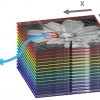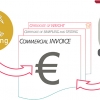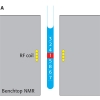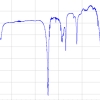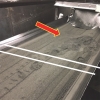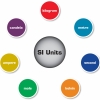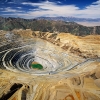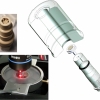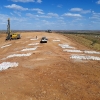What should we be calling the various types of spectral imaging? The authors lay out some suggestions and welcome your views.
Articles and Columns
Pages
This cannot be true—surely sampling and weighing are different activities. Well yes—and no! Sampling and weighing of traded metal, mineral and agro commodities are different activities—but at one or several stages in the supply chain they will come together in a single focus point, which is value ($, EUR).
The SensorFINT COST Action is a European Network for assuring food integrity using non-destructive spectral sensors.
Following our articles on the FAIR initiative, we now look at some examples of the FAIRification of data handling, collection and archiving.
This article concentrates on the International Organization for Standardization (ISO) organisation, its standards and their place within the Quality environment. By definition, it discusses the role of ISO in the administration and control of these standards and their evolution and harmonisation into the standards currently in existence.
This article describes a clever adaptation to benchtop NMR experiments that allows the collection of multiple scans (to produce high signal-to-noise ratios) without the time penalties involved.
Cultural heritage is a growing application area for spectroscopy, and our second article describes how infrared and X-ray spectroscopy are being used to explore the coatings used by the old Cremonese makers that produced such outstanding sound.
The Tony Davies Column offers a challenge to us all with another contribution on FAIR data, which should be Findable, Available, Interoperable and Readable. It is clearly the way we should all be going, everybody from manufacturers and software developers, through researchers to publishers needs to work together.
John Hammond describes the start of a new mini-series of column articles and what you can look forward to in the next few issues.
The Sampling Column provides some easy-to-understand examples of what sampling errors are, what are the consequences of them and what can be done about them. Particular examples from pharma, PAT and NIR spectroscopy are provided.
Mike Sargent gives an overview of traceability in atomic spectroscopy. He explains the background, as well as more specialised areas such as inductively-coupled plasma mass spectrometry (ICP-MS).
Mark McDowall, Meetings Secretary of The British Mass Spectrometry Societ,y explains how the society coped with the restrictions of COVID and what his views are for the future of events.
How did a major trade show organiser cope with the disruption of COVID-19? Susanne Grödl, Exhibition Director of analytica for Messe München, gives her experience.
Following on from a recent column that reported on work which had shown that weight fractions were often incorrect concentration units to use in quantitative chemometric studies, Howard Mark goes into more detail.
Oscar Dominquez here presents the critical role of QM in the mining sector, where everything is BIG: tonnages, challenges, environmental impact, profits, risks—illustrating how proper sampling is a major critical success factor also here. But the mining sector view is not unique; the QM prerogatives can be carried over to very many other sectors as well.
What can quality sustems tell us about PCR testing for COVID-19? Peter Jenks has some concerns.
A look at recent advances in the use of Raman spectroscopy in the nuclear industry.
Over the last two decades, significant advances in technology and new methodologies have made proteomics an extremely powerful tool for protein scientists, biologists and clinical researchers. Increase in the data produced also creates new challenges for bioinformatics software development.
Peter McIntyre and Tony Davies remember Bill George, a real Welsh character and educator whose style and charisma influenced many to go on and not only stay in science but to rise to leading positions either in industry or academia.
There is hardly any other application field where correct sampling is as critically important than for Gold mineral resource estimation, because of the very low grades and the extremely irregular mineralisation heterogeneities encountered.

